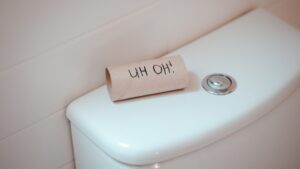
Toilet Flushes Slow:5 Reasons And Solutions
Sometimes, when your toilet flushes slow, it can feel more like a sluggish stream than a powerful waterfall. This means you’re dealing with a weak

Are you grappling with the toilet whistling every time you flush? If that’s the case, there’s a significant issue with your toilet that demands immediate attention!
Not only is the whistling sound a nuisance, but a faulty valve could also mean excessive water usage. In essence, neglecting this could lead to soaring utility bills.
If you’re eager to delve into the causes and remedies of this toilet whistling problem, then you’re in the right place! This article is designed to provide you with an understanding of why your toilet is whistling and offer practical solutions to fix it.
Let’s dive in!
Occasionally, you might notice a faint, almost imperceptible whistle from your toilet, but there are times when this whistling becomes loud and hard to ignore. This intense whistling usually starts during or right after flushing and tends to continue for the duration of the flush.
Typically, the culprit behind toilet whistling is a metal ballcock valve. This type of valve includes an arm and a ball that start to oscillate when the toilet tank refills post-flush. It’s this oscillation of the valves that produces the whistling sound you hear.
The reason for this vibration can be attributed to a worn-out fill valve gasket, or it might simply be due to the general wear and tear that has gradually degraded the valve.
Ever noticed your toilet emitting a whistling sound? Or perhaps it seems to ‘speak’ to you with each flush? If that’s happening, your toilet is signaling trouble.
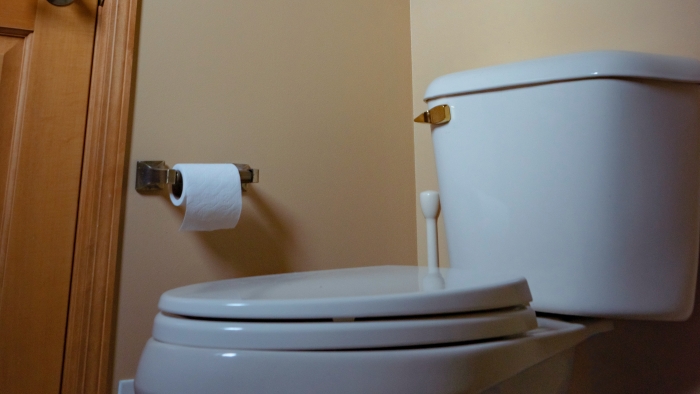
A whistling noise while flushing is a clear indication of a problem that requires prompt attention. When activated, your toilet may either let out a gentle, soft whistle or emit a loud, alarming whistle.
If your toilet is equipped with a metal ballcock valve, the whistling is likely due to the ball and armature of the valve vibrating as the toilet tank refills. This vibration of the metal components produces the noticeable high-pitched whistle.
While a minor adjustment might sometimes resolve the whistling, a persistent, ear-piercing sound could be a precursor to a complete fill valve failure.
Addressing this issue can be straightforward for those with basic plumbing skills, but if not, it’s wise to enlist the help of a professional plumber.
Encountering a whistling noise from your toilet during its refill process can be quite unsettling. This sound is an indicator that there’s an issue with your toilet which requires immediate attention. Let’s explore a typical reason for your toilet’s post-flush whistling.
The whistling after a toilet flush is often linked to the toilet’s fill valve. This valve functions as a float, rising and falling with the water level to control the flow into the tank post-flush.
Over time, the components of the fill valve may wear out, causing it to deteriorate and resulting in the whistling noise after flushing.
Should your toilet be fitted with a metal ballcock valve, the cause of the whistling might be attributed to the vibrations from either general wear and tear or a damaged gasket.
Therefore, if your toilet exhibits a whistling sound after flushing, it’s advisable to have the fill valve inspected and possibly replaced by a professional plumber.
Does your toilet mysteriously whistle even when nobody’s using it? If so, it’s a sign that your toilet might not be in the best shape. A high-quality toilet should remain silent once its tank is fully replenished post-flush.
However, if you hear whistling sounds from an idle toilet, this could indicate a malfunction or leak. Other potential causes for your toilet whistling when not in use include:
To address this problem, it’s crucial to inspect the internal pipes for any issues and rectify them promptly, to avoid a spike in your water bills.
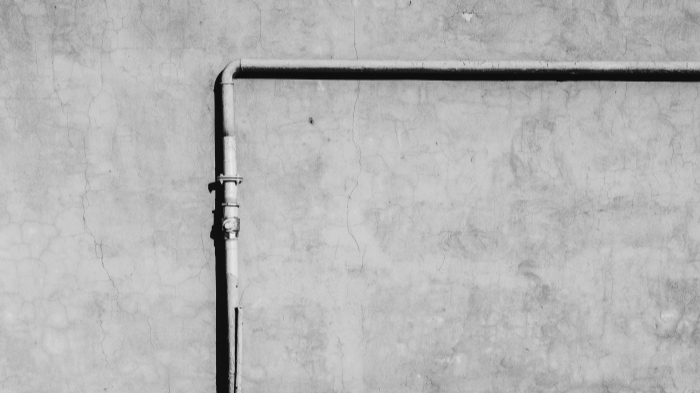
Wondering if a whistling toilet is really a cause for concern? Well, let’s clear up the confusion!
Many homeowners might downplay the significance of a whistling toilet, enduring the bothersome and loud noises it makes. However, it’s important to understand that a defective valve, which often causes this problem, is likely to deteriorate further over time.
If your toilet is whistling during or after flushing, or even when it’s not being used, it’s not a situation to be overlooked. Ignoring it could result in increased water consumption, higher utility bills, and possibly even an overflowing toilet.
To prevent further damage and the associated headaches, it’s advisable to have the valve replaced as soon as possible. Addressing this issue proactively is a decision you’ll certainly appreciate in the long run.
Looking for effective strategies to put an end to your toilet’s whistling? You’re in the right place, as this part of the article will guide you through the necessary steps!
Occasionally, a restricted water flow to the toilet can cause it to start whistling. Thus, it’s essential to examine the toilet’s water supply valve first. You’ll find this valve behind the toilet, close to the wall.
Turn the valve counterclockwise to fully open it. If the whistling persists even after this adjustment, the next step is to remove the cover of the toilet tank for a more thorough investigation.
Should the whistling not originate from the water supply valve, then the fill valve might be to blame. This is often the case with older toilets that have a metal ballcock valve.
To pinpoint the source, flush the toilet and listen for where the whistling emanates from. If it’s coming from the fill valve, located in the toilet’s rear left corner, perform a visual check for any debris obstructing the water flow. You can clean any accumulated deposits on the fill valve with a damp cloth.
Once you’ve cleared away debris from the fill valve, give the toilet another flush to see if it still whistles. If the whistling continues, the fill valve likely needs replacing.
For toilets with an old metal ballcock valve, changing the gasket may stop the whistling. Remember, plastic valves tend to be less prone to whistling than metal ones. So, consider switching to a plastic fill valve.
Another innovative solution to consider, in line with our previous suggestions, is the use of toilet light. While it might sound unconventional, a toilet light can offer a visual cue to help pinpoint the source of the whistling.
When installed inside the toilet tank, the light illuminates the internal components, making it easier to observe and identify any malfunctioning parts during the flushing process. This method is particularly useful in dimly lit bathrooms where visibility is a challenge.
Not only does it add a practical element to your troubleshooting efforts, but a toilet light also brings a touch of modern convenience to your bathroom experience.
Toilets naturally produce various sounds during flushing, refilling, or draining, but whistling is unusual.
Therefore, if you encounter a high-pitched, sharp whistling noise from your toilet, it’s time for some detective work.
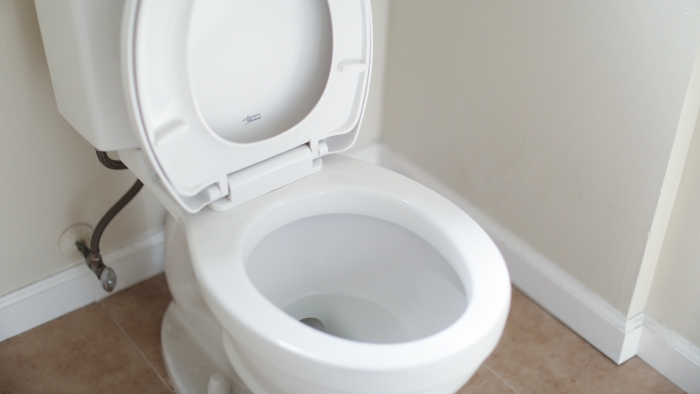
If you’re unable to resolve the issue on your own, don’t hesitate to call in professional plumbers to ensure your toilet is restored to optimal functioning condition.
Tackling a toilet whistling issue effectively requires a combination of careful inspection, timely intervention, and sometimes, innovative solutions.
Whether it’s checking the water supply valve, examining and potentially replacing the fill valve, or even utilizing a toilet light for better visibility, each step is crucial in silencing the unwelcome noise.
Remember, a whistling toilet is not just a minor annoyance but a sign of underlying issues that, if left unaddressed, can lead to increased water usage and higher bills.
In cases where DIY fixes don’t cut it, seeking professional plumbing assistance is the best course of action to ensure your toilet functions smoothly and quietly.
Addressing toilet whistling proactively not only brings peace to your home but also helps maintain the efficiency and longevity of your plumbing system.
Can a change in water pressure cause my toilet to whistle?
Yes, fluctuations in water pressure can sometimes lead to a whistling toilet. If you’ve noticed changes in water pressure in your home, it could contribute to the whistling sound.
Is it necessary to turn off the water supply before inspecting the toilet for whistling issues?
While not always necessary, turning off the water supply can make the inspection process safer and easier, especially if you’re planning to remove any parts for a closer look.
How often should I check my toilet’s internal mechanisms to prevent whistling?
Regular maintenance, such as a bi-annual check of your toilet’s internal components, can help prevent whistling and other issues from developing.
Could a whistling toilet be a symptom of larger plumbing issues in my home?
While a whistling toilet often indicates a localized issue within the toilet itself, it can sometimes be a sign of broader plumbing problems, especially if accompanied by other symptoms like low water pressure or slow drains.
Are there any temporary fixes for a whistling toilet if I can’t immediately repair or replace the faulty parts?
While temporary fixes aren’t ideal, reducing the flow of water to the toilet by slightly closing the supply valve can sometimes lessen the whistling sound until proper repairs can be made. However, this should be seen as a short-term solution.


Sometimes, when your toilet flushes slow, it can feel more like a sluggish stream than a powerful waterfall. This means you’re dealing with a weak

Blue toilet water, often seen as a sign of cleanliness, is usually the result of using those tank cleaning tablets. While they might appear to

How to unclog toilet is not often a thought until trouble strikes. When our toilet clogs or malfunctions, it becomes more than just a small

Contrary to common belief, your clean toilet isn’t the most bacteria-ridden place in your house. In fact, your smartphone, keyboard, or backpack harbor far more
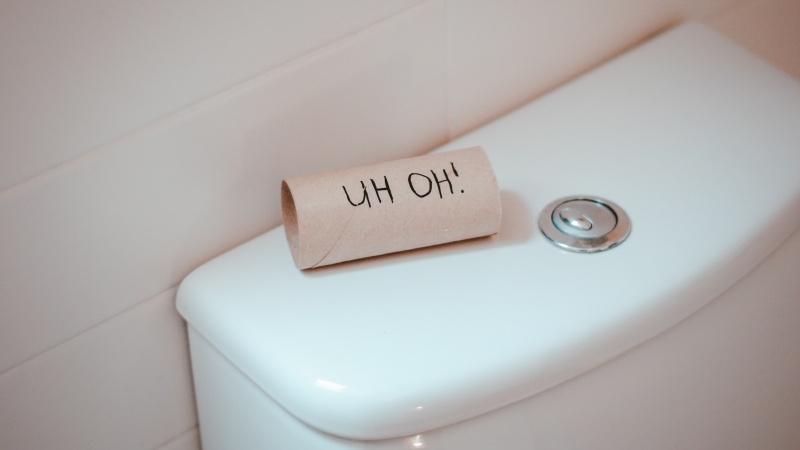
Sometimes, when your toilet flushes slow, it can feel more like a sluggish stream than a powerful waterfall. This means you’re dealing with a weak

Blue toilet water, often seen as a sign of cleanliness, is usually the result of using those tank cleaning tablets. While they might appear to

How to unclog toilet is not often a thought until trouble strikes. When our toilet clogs or malfunctions, it becomes more than just a small

Contrary to common belief, your clean toilet isn’t the most bacteria-ridden place in your house. In fact, your smartphone, keyboard, or backpack harbor far more
Copyright © 2024 toiletlighton. All Rights Reserved.